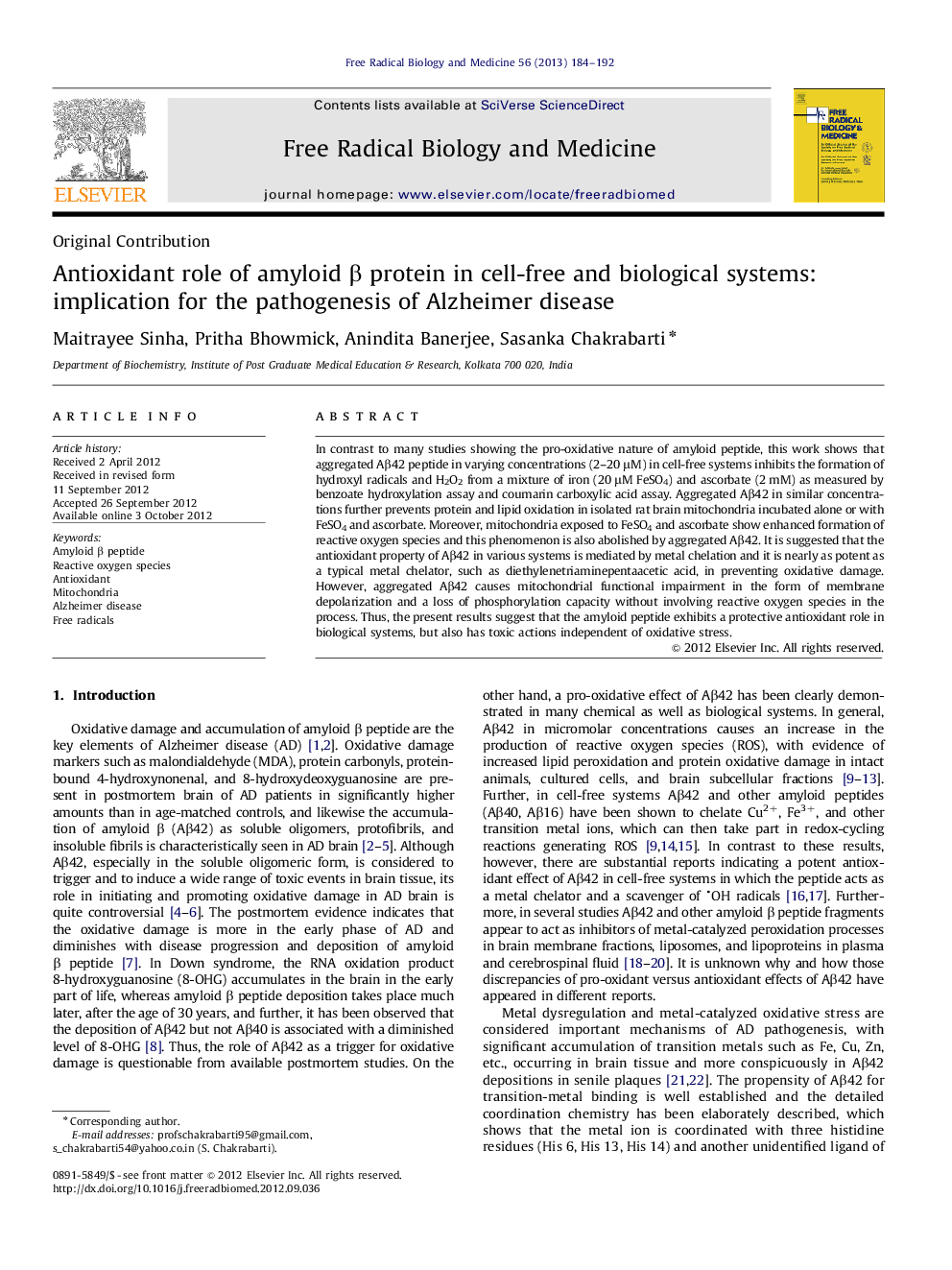| Article ID | Journal | Published Year | Pages | File Type |
|---|---|---|---|---|
| 1908570 | Free Radical Biology and Medicine | 2013 | 9 Pages |
In contrast to many studies showing the pro-oxidative nature of amyloid peptide, this work shows that aggregated Aβ42 peptide in varying concentrations (2–20 μM) in cell-free systems inhibits the formation of hydroxyl radicals and H2O2 from a mixture of iron (20 μM FeSO4) and ascorbate (2 mM) as measured by benzoate hydroxylation assay and coumarin carboxylic acid assay. Aggregated Aβ42 in similar concentrations further prevents protein and lipid oxidation in isolated rat brain mitochondria incubated alone or with FeSO4 and ascorbate. Moreover, mitochondria exposed to FeSO4 and ascorbate show enhanced formation of reactive oxygen species and this phenomenon is also abolished by aggregated Aβ42. It is suggested that the antioxidant property of Aβ42 in various systems is mediated by metal chelation and it is nearly as potent as a typical metal chelator, such as diethylenetriaminepentaacetic acid, in preventing oxidative damage. However, aggregated Aβ42 causes mitochondrial functional impairment in the form of membrane depolarization and a loss of phosphorylation capacity without involving reactive oxygen species in the process. Thus, the present results suggest that the amyloid peptide exhibits a protective antioxidant role in biological systems, but also has toxic actions independent of oxidative stress.
Graphical abstractFigure optionsDownload full-size imageDownload high-quality image (295 K)Download as PowerPoint slideHighlights► Amyloid β protein (Aβ42) inhibits oxygen radical formation in a cell-free system. ► Aβ42 prevents iron–ascorbate-induced oxidative damage to brain mitochondria. ► Aβ42 prevents mitochondrial reactive oxygen species formation. ► Aβ42 causes mitochondrial dysfunction without reactive oxygen species involvement.
